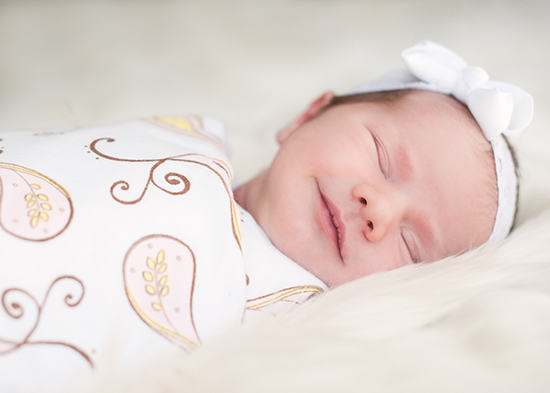As a nanny, you want to do everything you can to be sure the babies that you care for are as safe and happy as possible. For caregivers who take care of young infants, it’s important to keep comfort in mind when baby is awake and also when baby is napping. The following three tips can help make sure that a baby’s crib is a comfy and safe sleeping environment.
Step 1: Swaddle
Experts such as Dr. Harvey Karp, Dr. Laura Jana and Dr. Sears recommend swaddling for baby’s sleep time. Large, square cotton blankets called swaddling blankets can help babies transition from their mother’s womb and swaddled back-sleeping infants are proven to sleep better than unswaddled babies, according to Dr. Bradley Thach. Swaddling is easy, but requires a little practice to perfect your technique and swaddle like a nurse at the hospital.
To begin a swaddle, place the blanket on a flat surface in a diamond position. Fold the top corner down (six-inches) and place baby in the center of the blanket with their neck at the fold. Start on the left and bring the first corner over and tuck it behind baby. Bring the bottom corner over baby’s left shoulder and behind baby’s back. Take the third corner across baby, tucking the tail of the swaddling blanket into the fold on the front.
When swaddling, be sure to wrap baby snugly. The swaddle should fit snugly but not too snugly. You should be able to fit your hand between the blanket and the infant’s chest. SwaddleDesigns offers a variety of soft cotton flannel swaddling blankets, organic cotton blankets, open weave and breathable lightweight styles to help soothe baby to sleep. SwaddleDesigns blankets come equipped with step-by-step instructions sewn right into the edge of the blanket—they’re the only blanket with this helpful guide.
Step 2: Put Baby to Sleep
Even if baby loves playful tummy time while awake, babies should always sleep on their backs. Once you have the swaddling technique down, place baby into the crib on her back and check on her during nap time to be sure she hasn’t flipped over. Positioners and bumpers should not be used and all soft stuffed toys, quilts and pillows should be removed from the crib during sleep time, according to the American Association of Pediatrics. Even if you love sleeping on your side, babies should not be put into this position—when they are on their sides they are more likely to roll onto their tummies. If baby can rollover by herself, it is time to transition from swaddling to a wearable blanket.
Step 3: Monitor
While nap time can be a great opportunity to get other jobs done around the home or maybe just relax for a bit, it’s a good idea to keep tabs on the sleeping infant. While audio monitors broadcast sounds from the nursery and are a great way to listen for coos and cries, a video monitor can give you an even better idea of baby’s sleep habits.
The wireless MBP36 Motorola baby monitor features a 3.5-inch diagonal LCD color screen with infrared night vision, a high-sensitivity microphone and remote operated tilt and zoom capabilities.
Although monitors may add peace of mind, the American Association of Pediatrics notes that caregivers may gain a false sense of security when using monitors. Be sure to check in on baby personally in addition to using a monitor. Remember, all electrical cords and those attached to video monitors and cameras should be kept three-feet away from the crib.

Thank you for this valuable knowledge. We are very made sensitive by this issue in quotidian life and on the struggle to confront. We share your interest in speaking with the question, with our professionals on http://TAnanny.com – the social care jobs services